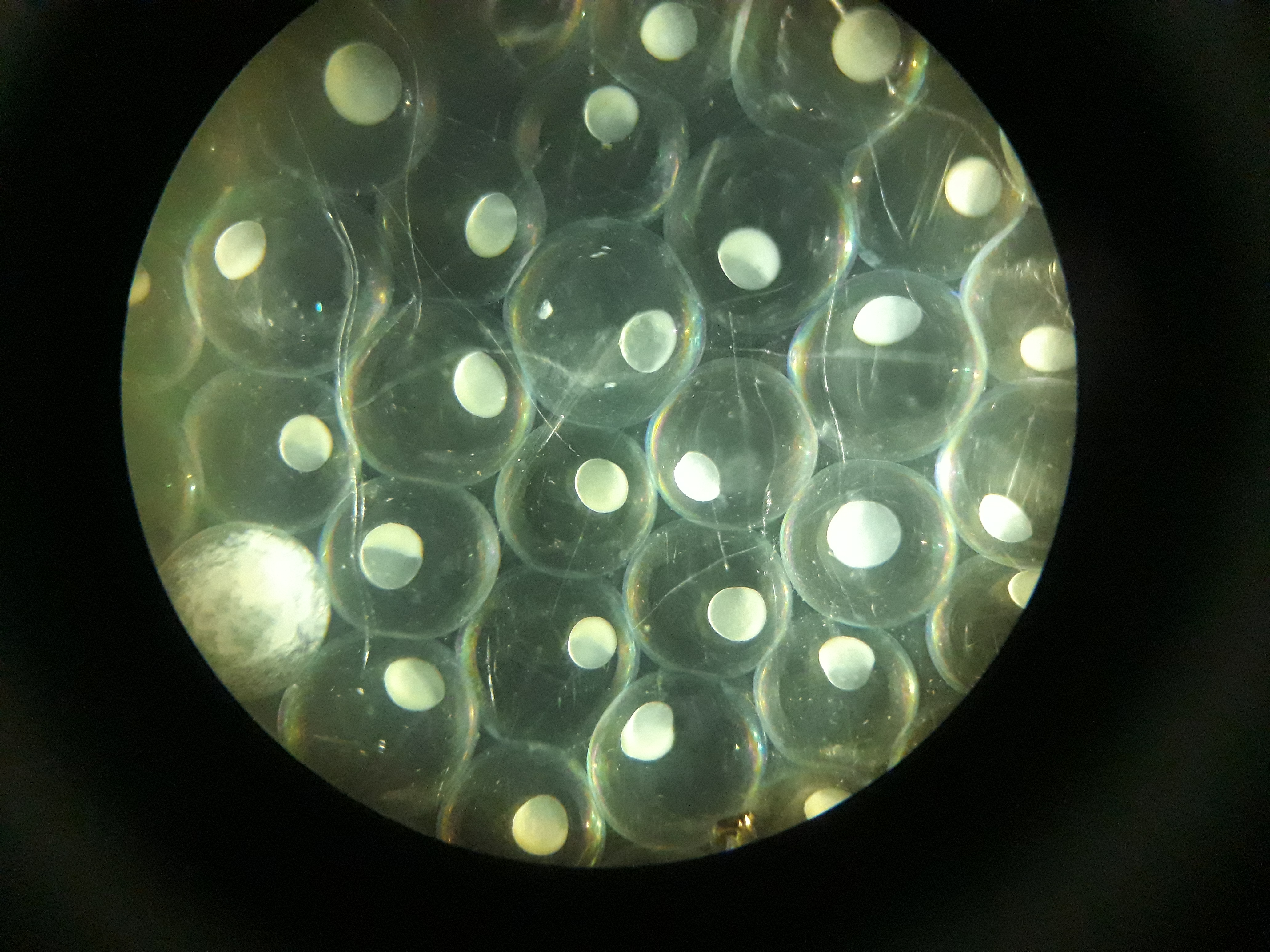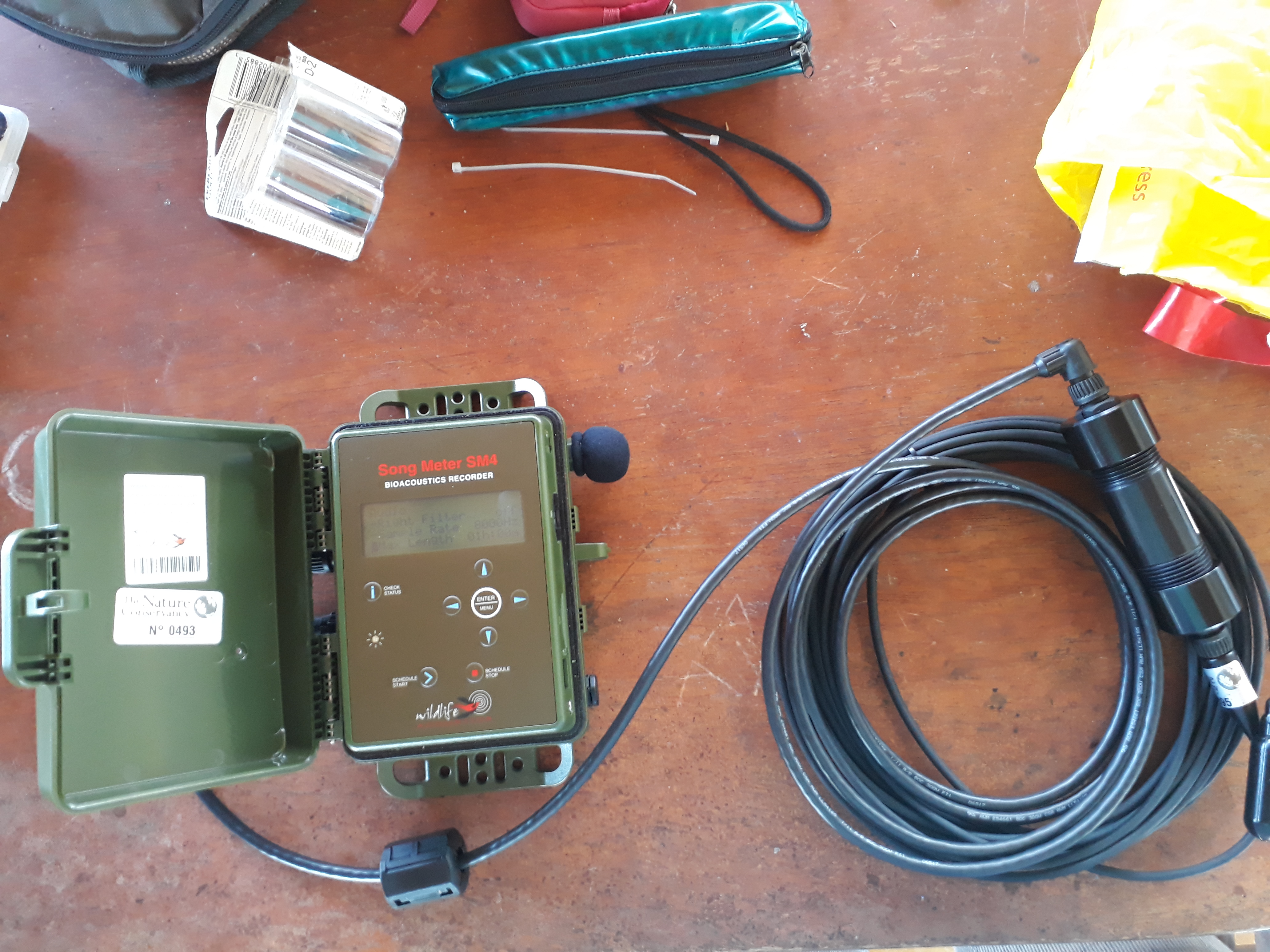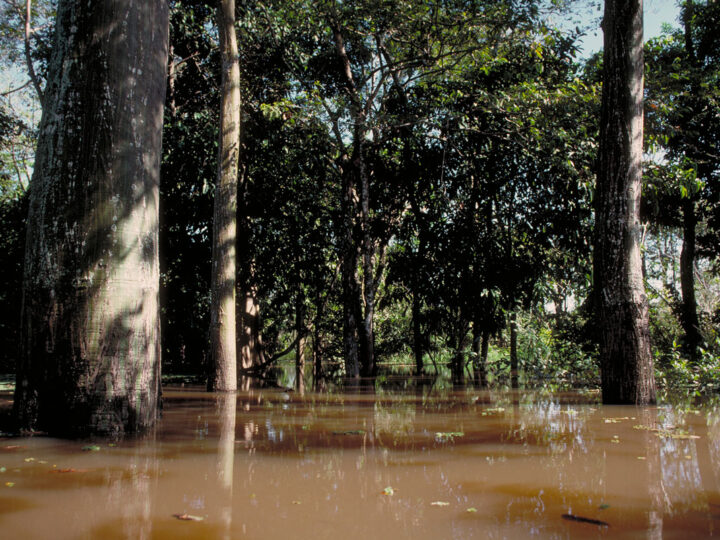
The bocachico from the Magdalena-Cauca basin, in Colombia, was the species studied with the hydroacoustic technique, with the aim of knowing its song during the breeding season. Photography: Juan Guillermo Ospina Pavón/TNC
Sounds are one of the most important forms of communication in fauna. The animals sing, roar or buzz when they detect a threat or are about to hunt their prey, and to defend their territories or attract the attention of potential mates. Fish, although they do not have ears, also emit and hear sounds. In fact, so far we recognize that more than 700 species of fish produce some type of sound and of these at least 80 are freshwater fish. Fish communicate with each other thanks to their middle and inner ear.
One of the techniques for studying fish sounds is hydroacoustics, in which, with the help of aquatic microphones (hydrophones), non-invasive observations are made to measure the frequency, intensity or periodicity of these sounds. Silvia López Casas, PhD in Biology from the University of Antioquia and an expert in conservation and management of freshwater fisheries, observed for about a year (2019), together with Sebastián Muñoz, a student at the University of Antioquia, the Ichthyology Group of the same university and The Nature Conservancy (TNC), the way in which the male specimens of bocachico (Prochilodus magdalenae) communicate during the moment of reproduction, specifically in courtship.
 Fertilized bocachico eggs. Photography: Silvia López Casas.
Fertilized bocachico eggs. Photography: Silvia López Casas.
The study to analyze and describe the song of the bocachico was carried out in seven points of the Magdalena-Cauca macro-basin, in Colombia, in two phases: in the first, the fish arranged in pairs (male and female specimens) were recorded at different fish farms. The first results showed that males emit a song when they are ready for spawning (in cases where the males did not sing, there was no spawning by the females and, therefore, there was no fertilization and reproduction was not successful), which is indicative of the gonad maturity of the species. In this phase we learned how the song of the bocachico sounds, what is its duration and its frequency.
The second phase was carried out in the natural environment of the species, the rivers, with the objective of verifying if this song is the same or if it varies between different locations. “Under natural conditions, fish choose certain areas for spawning, these are areas in which they meet at specific times of the year to emit acoustic signals, and in which there are even other species of fish, also migratory, to spawn. Although different types of songs were detected, it was noted that the song of the bocachicos was different from the others”, comments Silvia López.
Listen here to the song of the bocachico (Prochilodus magdalenae).
An opportunity
During the second phase, at the sites selected for the study, artisanal fishermen served as a guide to identify the spawning areas of bocachicos. “The fishermen took us to some places where they hear the fish ‘snore’ (they spoke of the snoring of the bocachicos), they even said that they ‘feel on their feet’ these acoustic signals when they travel in the boat or hear them when they go into the water to fish. Other artisanal fishermen from other basins in this country (Atrato, Orinoquia, Amazonía or Sinú), say that they have also heard the fish sing, snore or push and that they have also felt them blow in the water. This shows that in addition to the bocachico, other migratory species, including those of the genus Prochilodus (present in the great Amazon basin), choose certain areas and times for reproduction”, comments the researcher.
For the planning of the territory and the management of the fishing resources it is necessary to identify the spawning moments and areas to determine their protection since they are critical areas for the species. “If the objective is to manage the fishing resource, it is necessary to establish good practices such as what is the allowed amount that can be extracted, in what periods of the year it can be done and in what moments of the reproduction of the species it is better to do it to avoid putting its survival at risk. This is especially important when it comes to migratory freshwater species that are the basis of food and income generation for local communities, but that nevertheless face different pressures such as water pollution”, explains Silvia López. In Thailand, for example, 23 communities in the Salween River basin organized to implement measures such as restricting fishing in certain areas of the basin, which favored the connectivity of ecosystems, the regeneration of fish biomass, the decrease pressure on fish species, and increased economic benefits for these communities.
Hydroacoustics

Hydroacoustics is a technique that allows us to study biodiversity in a non-invasive way with the species. Photography: Silvia López Casas.
As already mentioned, hydroacoustics is one of the least invasive techniques for monitoring biodiversity; it can be used in ecological, evolutionary, behavioral or reproductive studies, for the identification and inventory of species, and for the evaluation of processes of both aquatic species and the ecosystems (marine or freshwater) in which they inhabit. Its use in fisheries management has served to implement conservation measures for species and their habitats, based on the identification and characterization of breeding areas. Although it is a rarely used technique, possibly due to the high cost of hydrophones and the limited availability of applications to save the recorded data, Silvia López explains that hydroacoustics are ideal for observing (or listening to) fish in dark water rivers, which are cloudy and laden with sediment, like many of those present in the Amazon basin. The technique allows us to “hear things that which we are not able to see” due to the natural conditions of rivers, and, to this extent, it can favor the connection of communities with these ecosystems.
—
Written by Carolina Obregón Sánchez
Sources:
- Silvia López Casas. Doctor in Biology from the University of Antioquia and researcher in fish ecology and freshwater ecosystems.
- Status, development and trends of studies in acoustics of fauna in Colombia, Biota Colombiana magazine, Vol. 22 No. 1 (2021), Alexander von Humboldt Biological Resources Research Institute.
- The sounds of fauna: a powerful tool for monitoring biodiversity.
- This is how the bocachicos from Magdalena “sing” when the time to reproduce comes; Daniela Quintero Díaz, El Espectador, Blog El Río, February 21, 2021.





